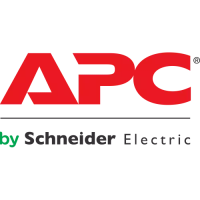Page 4 1/25/2013
matic static bypass output of the UPS.
3. Output Contactor: The output inverter shall be provided with an output mechanical contac-
tor to provide physical isolation of the inverter from the critical bus. With this feature a failed
inverter shall be removed from the critical bus.
4. Battery Protection: The inverter shall be provided with monitoring and control circuits to
limit the level of discharge on the battery system.
5. Redundancy: The UPS shall be configured with redundant output inverters, each with se-
miconductor fusing, and logic controlled contactors to remove a failed component from the
critical bus.
C. Static Bypass:
1. As part of the UPS, a system static bypass switch shall be provided. The system static by-
pass shall provide no break transfer of the critical load from the Inverter output to the static
bypass input source during times where maintenance is required, or the inverter can not
support the critical bus. Such times may be due to prolonged or severe overloads, or UPS
failure. The UPS and static bypass switch shall constantly monitor the auxiliary contacts of
their respective circuit breakers, as well as the bypass source voltage, and inhibit potentially
unsuccessful transfers to static bypass from taking place. a. Rated voltage: …[ 380 / 400 /
415 ]… volts rms, adjustable via the user interface (see section 10), within tolerances of +/-
3% in order to take into account voltage drops in the cables.
2. As design of the static switch power path shall consist of Silicon Controlled Rectifiers (SCR)
wit a continuous duty rating of 125% of the UPS output rating.
3. Automatic Transfers: An automatic transfer of load to static bypass shall take place whe-
never the load on the critical bus exceeds the overload rating of the UPS. Automatic trans-
fers of the critical load from static bypass back to normal operation shall take place when
the overload condition is removed from the critical bus output of the system. Automatic
transfers of load to static bypass shall also take place if for any reason the UPS cannot
support the critical bus.
4. Manual Transfers: Manually initiated transfers to and from static bypass shall be initiated
through the UPS display interface.:
5. Overloads: The static bypass shall be rated and capable of handling overloads equal to or
less than 125% of the rated system output continuously. For instantaneous overloads cau-
sed by inrush current from magnetic devices, or short circuit conditions, the static bypass
shall be capable of sustaining overloads of 1000% of system capacity for periods of up to
100 milliseconds.
6. Modular: The static bypass switch shall be of a modular design.
7. System Protection : As a requirement, back-feed protection in the static bypass circuit
shall also be incorporated in the system design. To achieve back-feed protection, a mecha-
nical contactor in series with the bypass SCR(s) shall be controlled by the UPS/static
switch, to open immediately upon sensing a condition where back-feeding of the static
switch by any source connected to the critical output bus of the system is occurring. One
such condition could be a result of a shorted SCR.
2.5 ENVIRONMENT CONDITIONS
A. Storage Ambient Temperature: -15° C to +40° C.
B. Operating Ambient Temperature: 0°C to +40°C (+25° C is ideal for most battery types.
C. Relative humidity: 0 to 95% non-condensing.
D. Altitude: Maximum installation with no derating of the UPS output shall be 1000 meters
above sea level:
1. 1500 m -95% load
2. 2000 m -91% load
3. 2500 m -86% load
4. 3000 m -82% load
2.6 BATTERY
A. The UPS battery shall be of modular construction made up of user replaceable, hot swappable,
fused, battery modules. Each battery module shall be monitored for voltage and temperature for
use by the UPS battery diagnostic, and temperature compensated charger circuitry.

